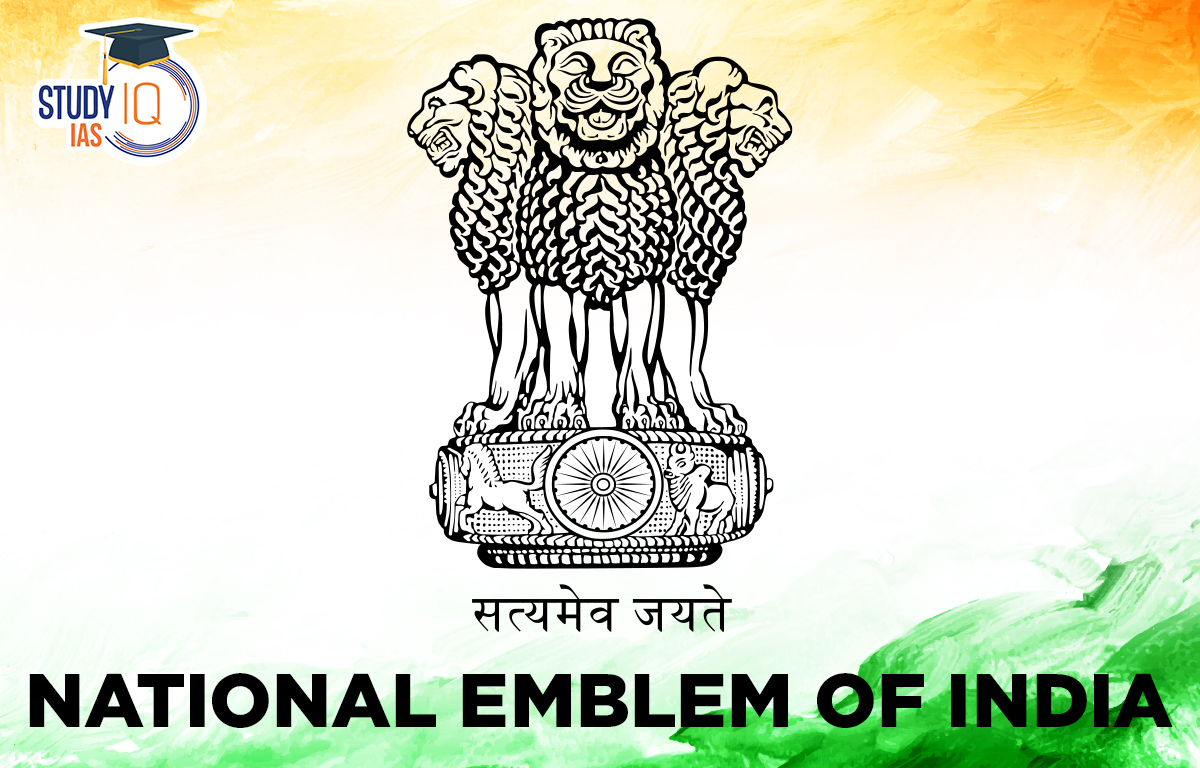Table of Contents
The National Emblem of India, derived from the Lion Capital of Ashoka, represents the core values of India—strength, peace, and courage. This emblem, found on official documents, currency, and government seals, symbolizes India’s sovereignty and democratic spirit. Understanding the history, design, and significance of the National Emblem is essential for aspirants preparing for exams like UPSC, as it forms part of the nation’s identity.
History of the National Emblem of India
The origin of India’s National Emblem is rooted in ancient India, dating back to the Mauryan Empire under Emperor Ashoka, who reigned in the 3rd century BCE. Ashoka, a follower of Buddhism, established various pillars across the Indian subcontinent as symbols of the moral law he advocated. One of these pillars, located in Sarnath, Uttar Pradesh, is known as the Lion Capital of Ashoka, a structure believed to date back to 250 BCE.
When India gained independence on August 15, 1947, the government sought a symbol to represent the newly sovereign nation. After careful deliberation, the Constituent Assembly of India adopted the Lion Capital of Ashoka as the country’s official emblem on January 26, 1950, the same day the Indian Constitution came into effect.
Design and Structure of the National Emblem
The National Emblem features four Asiatic lions standing back-to-back, symbolizing courage, strength, and confidence. However, in the official depiction, only three lions are visible from the front, with the fourth hidden from view.
Below the lions is a circular base that includes:
- An elephant representing patience and stability
- A horse symbolizing energy and loyalty
- A bull denoting hard work and resilience
- A lion standing for strength and courage
Separating these animals is a chakra (wheel), reminiscent of the Ashoka Chakra on the Indian flag, which symbolizes dharma (moral law) and righteousness.
At the base, the emblem includes the national motto “Satyameva Jayate” in Devanagari script, meaning “Truth Alone Triumphs.” This phrase is derived from the Mundaka Upanishad, reinforcing India’s core belief in truth and justice.
Animals in the National Emblem and Their Symbolism
The animals depicted on the National Emblem hold unique symbolic meanings:
- Lions: The four lions symbolize strength, courage, and pride. Lions have long represented authority in India’s cultural heritage.
- Elephant: Representing peace, patience, and wisdom, the elephant also signifies strength and intelligence.
- Horse: Symbolic of loyalty, energy, and speed, the horse stands for India’s forward motion and progress.
- Bull: Known for its hard work, resilience, and determination, the bull epitomizes a hardworking spirit and perseverance.
Each animal reflects values integral to India’s ethos and governance, emphasizing moral and ethical strength.
Important Facts About the National Emblem for UPSC
- Adoption Date: The National Emblem was adopted on January 26, 1950, the day India became a republic.
- Sculptor of the Original Lion Capital: The original Lion Capital of Ashoka is attributed to Emperor Ashoka’s artisans and reflects Mauryan artistry.
- Motto: “Satyameva Jayate” (“Truth Alone Triumphs”) is inscribed in Devanagari script below the lions. This phrase is from the Mundaka Upanishad (3.1.6).
- Ashoka Chakra: The emblem includes a Dharma Chakra, known as the Ashoka Chakra, symbolizing law, virtue, and justice. This is similar to the one in the center of the Indian national flag.
- Position on Indian Currency: The National Emblem is embossed on Indian currency notes, representing India’s integrity and authenticity in monetary affairs.
- Revised Version: The National Emblem was recently updated on the new Parliament building in 2022, which generated public interest and debate due to its interpretation of the lions’ expressions, symbolizing strength.
Interesting Facts about the National Emblem
- Unique Representation: Only three lions are visible on the emblem despite there being four in total.
- Weight and Size: The original Ashokan Lion Capital stands approximately 2.31 meters (7.5 feet) high and weighs about 7,000 kg.
- Use in Government Documentation: The National Emblem is used on official government documents, passports, and currency as a symbol of authority.
- Legal Protection: Misuse of the National Emblem is prohibited under The State Emblem of India (Prohibition of Improper Use) Act, 2005.
- Symbol of Dharma: The inclusion of the Ashoka Chakra underlines India’s commitment to dharma or righteousness in all aspects of governance.
Significance of the National Emblem
The National Emblem represents India’s journey from ancient civilization to modern democracy. Each element—from the lions to the wheel, and the animals on the base—echoes India’s moral values, guiding principles, and commitment to upholding truth and justice.
The lions symbolize the strength and courage that India embodies in the international arena, while the Dharma Chakra emphasizes the continuous and balanced pursuit of justice and morality. It serves as a reminder of India’s historical legacy, diverse cultural values, and dedication to peace, unity, and ethical governance.
National Emblem of India UPSC
The national emblem of any country is a symbol of its authority and constitutional values. The Indian national emblem encapsulates within it, our long cultural history and important values of Indian culture, which are also inherent in our Constitution. It is inspired by the Ashoka pillar, erected a thousand years ago by Emperor Ashoka at Sarnath. We have taken the portion of Lion capital along with the abacus as our emblem. It was officially adopted as the national emblem on January 26, 1950.


 List of Awards and Honours Received by N...
List of Awards and Honours Received by N...
 List of GI Tag Products in India 2025, S...
List of GI Tag Products in India 2025, S...
 Hurun Global Unicorn Index 2025: Key Hig...
Hurun Global Unicorn Index 2025: Key Hig...





















